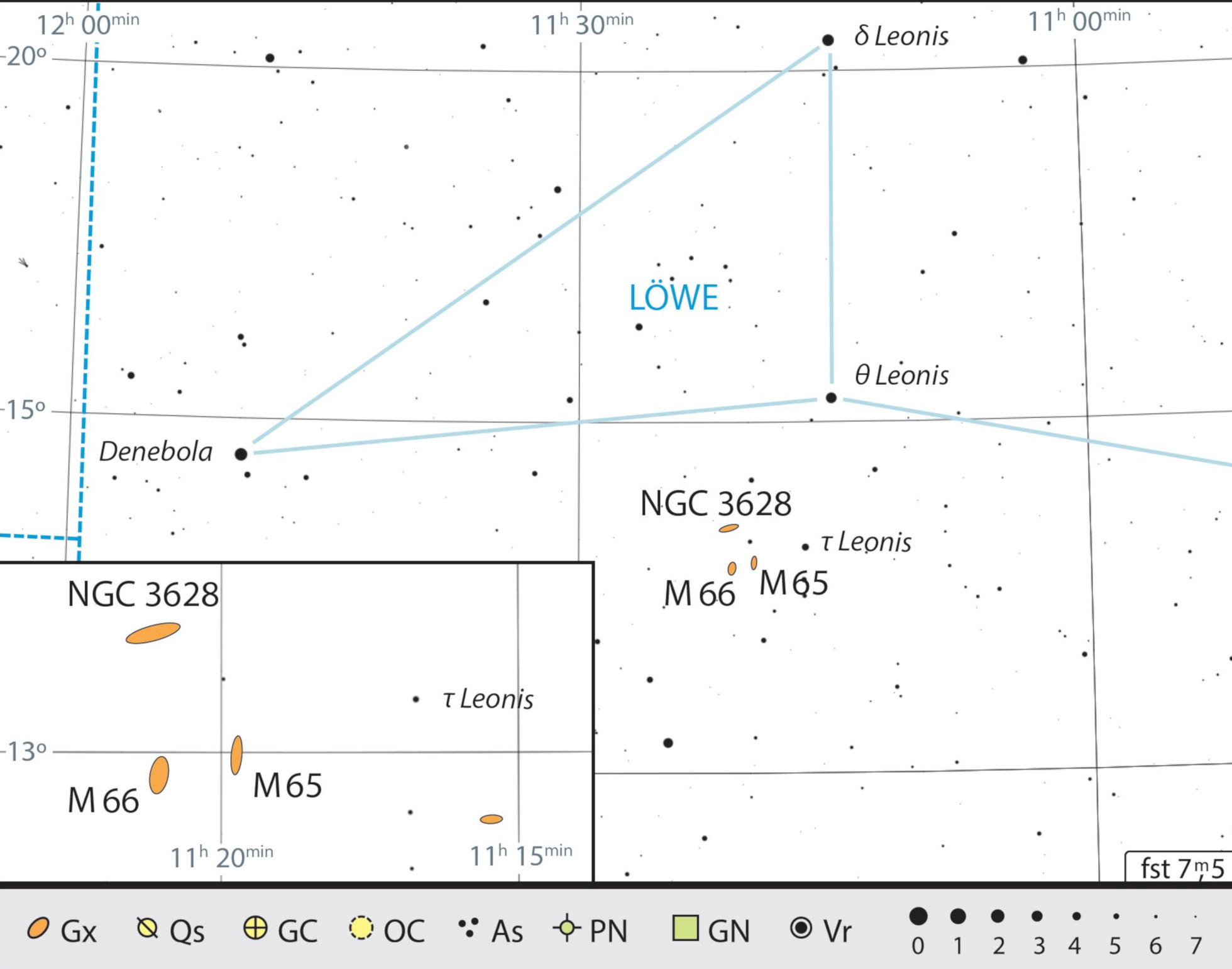The Leo Triplet
The galaxies belonging to the Leo Triplet are among the most distant deep sky objects you can observe from the city.
 Sven Junge
Sven Junge The Leo Triplet: Bottom left M66, right
M65, top NGC 3682. However for city-based
observers the sight is not as brilliant. Sven Junge
The Leo Triplet: Bottom left M66, right
M65, top NGC 3682. However for city-based
observers the sight is not as brilliant. Sven JungeThe distance from Earth to M65 and M66 is said to be around 30 million light years. This means that the two galaxies, together with NGC 3628 that form the so-called Leo Triplet in the constellation of Leo, are among the most distant deep sky objects that can be observed from urban locations. By comparison, galaxies M81 and M82, which are also popular with city observers, are much closer at a distance of 12 million light-years and, with a brightness of magnitude 6.8 (M81) and 8.4 (M82), are significantly brighter than M65 (mag 9.3) and M66 (mag 9.0) – but not necessarily any easier to find.
Dark sky necessary
A prerequisite for successfully observing M65 and M66 is what would be considered “dark sky” for urban conditions: Leo’s diamond-shaped torso with the stars Regulus, Denebola, Algieba and δ Leonis should be clearly visible with the naked eye, as well as η Leonis on the breast of the lion and τ Leonis, magnitude 3 star, located between Denebola and Regulus and which is also the starting point for a short star-hop to M66.
A letter “Y” as a guide
 M65/M66 through a 72mm-refractor at 21-times
and 53-times magnification. Thomas Jensen
M65/M66 through a 72mm-refractor at 21-times
and 53-times magnification. Thomas JensenAnyone who has ever struggled to find faint objects will appreciate the presence of prominent stars in the vicinity of the target object that can be used as a guide. This is especially true for the city astronomer using a GoTo system, who may be presented with a totally black field of view after inputting a target object.
This is different for M66, the galaxy that should always be visited first, before M65. As the map shows, there is a striking formation of four stars in its immediate vicinity, which stands out as a slightly west-inclined Y from the otherwise star-free surroundings. Now you should focus on the area around the foot of the Y and experiment with different magnifications. At 100-times, a faint oval-shaped glow appears, which forms the bright core of the galaxy.
Its partner galaxy M65, on the other hand, is not so easy to locate. You should keep the high magnification and scan the sky around the open head of the Y-shape. The third galaxy in the Leo Triplet, NGC 3682, with a brightness of magnitude 9.5, is unlikely to be accessible from an urban location, unless you have a large aperture and the good fortune of an exceptionally dark sky.
 From τ Leonis, M 5 and M66 are only a few telescope fields of view distant. J. Scholten
From τ Leonis, M 5 and M66 are only a few telescope fields of view distant. J. Scholten Author: Karl-Peter Julius / Licence: Oculum-Verlag GmbH
